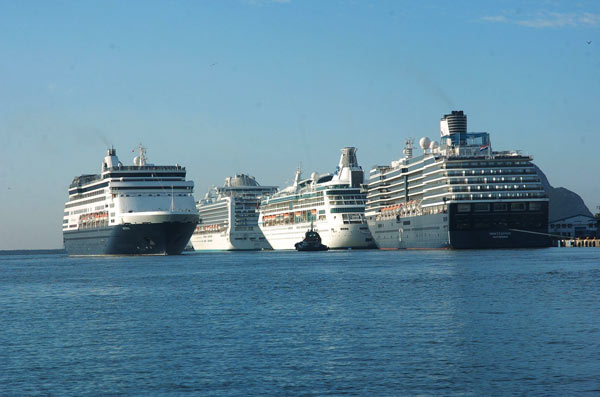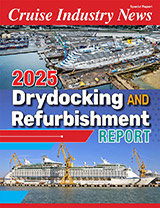 The cruise industry is facing a range of challenges on the marine operations side, ranging from environmental regulations to human engineering, new technology, alternative fuels and public perception.
The cruise industry is facing a range of challenges on the marine operations side, ranging from environmental regulations to human engineering, new technology, alternative fuels and public perception.
“Today, environmental regulations are clearly a challenge,” said Eirik Nyhus, director of maritime environmental strategic issues, at Det Norske Veritas (DNV). “We are looking at the regulations already in place and those that are coming – all of which will drive up costs for the cruise lines – whether for ballast or waste water treatment or for those related to fuel qualities. Whether cruise lines resort to scrubber technology or go to low sulfur fuels, they are looking at higher costs.”
At Lloyd’s Register (LR), John Hicks, manager of the passenger ship support center in Florida, said that one of the biggest challenges facing the cruise industry is the human factor. “It is becoming more and more apparent that as the industry grows and the ships become more complex, the cruise lines need to consider the human engineering aspect much more than it has in the past,” he said. “There is a great need to find appropriately trained staff and to be able to train and bring people up the ladder organically.”
A big issue is noise emissions – not into the ship – but into the ocean, according to Dr. Gerd-Michael Wuersig at Germanischer Lloyds’ (GL) department of risk assessment and mechanical engineering, especially with more ships sailing in sensitive areas such as Alaska and Antarctica. In addition, air emissions are also an issue, such as in Hamburg where ships dock in close proximity to residential areas.
However, the biggest challenge the industry may be facing is not the individual issues, said Massimo Volta, regional manager for North and Central America of the marine division for RINA. “Instead it is all the different issues that have to be tackled simultaneously,” he said, “ranging from environmental regulations on international and national levels, even local levels, and the ILO Labor Convention which will soon be implemented.”
Speaking to Cruise Industry News before the December U.N. Conference on Climate Change in Copenhagen – Nyhus said one concern surrounding the conference was uncertainty. The problem with a conference of this sort, he said, is that the participants, many of whom are politicians, face so many difficult decisions, that they may be tempted to look for easy targets – and shipping may be one of them.
On other topics, RINA’s Volta said that cold ironing is not a solution everywhere, noting that a modern cruise ship requires as much electric power as a town of 10,000. “When cold ironing is discussed, I think this concept has to be considered on a case by case basis. It may work in some places, but not everywhere. Cold ironing is an example of a basically sound environmental initiative, but should not be required across the board,” he added.
The classification societies expect varieties of the diesel engine to continue to power cruise ships for some time. But they also noted that there are alternatives, such as dual fuel systems, gas and nuclear power – although opinions were divided on the latter option.
It is not if it (nuclear) happens, but when it happens, according to LR’s John Carlton, global head of marine technology and investigations.
LNG is high on the list of alternative fuels and is in many ways a “wonderful solution,” DNV’s Nyhus said, with 20 percent less CO2 than diesel fuels, no SOx and very little NOx.
“Proper solutions need time,” added Volta, “involving engine manufacturers as well, and the goal should be not just to reduce consumption and hence emissions, but also to develop more efficient powerplants.”
Nyhus also sees emission control areas (ECAs) being expanded and noted that Mexico and the Bahamas have already indicated an interest in being part of the ECA area proposed for the U.S. and Canada. Some countries in the Mediterranean have also expressed interest, he added.
Volta, meanwhile, pointed out that energy savings is a double-sided issue. On one hand, he said, cruise lines need to conserve energy to be environmentally friendly, to comply with emissions regulations and their own internal objectives, while also minimizing costs. On the other hand, the lines need to meet and exceed the expectations of their passengers. So, it becomes a balancing act, he said, optimizing savings and investments.
He is convinced that the new rules will make the ships and operating procedures more complicated and may in turn lead to even more challenges.
Excerpt from Cruise Industry News Quarterly Magazine: Winter 2009/2010



